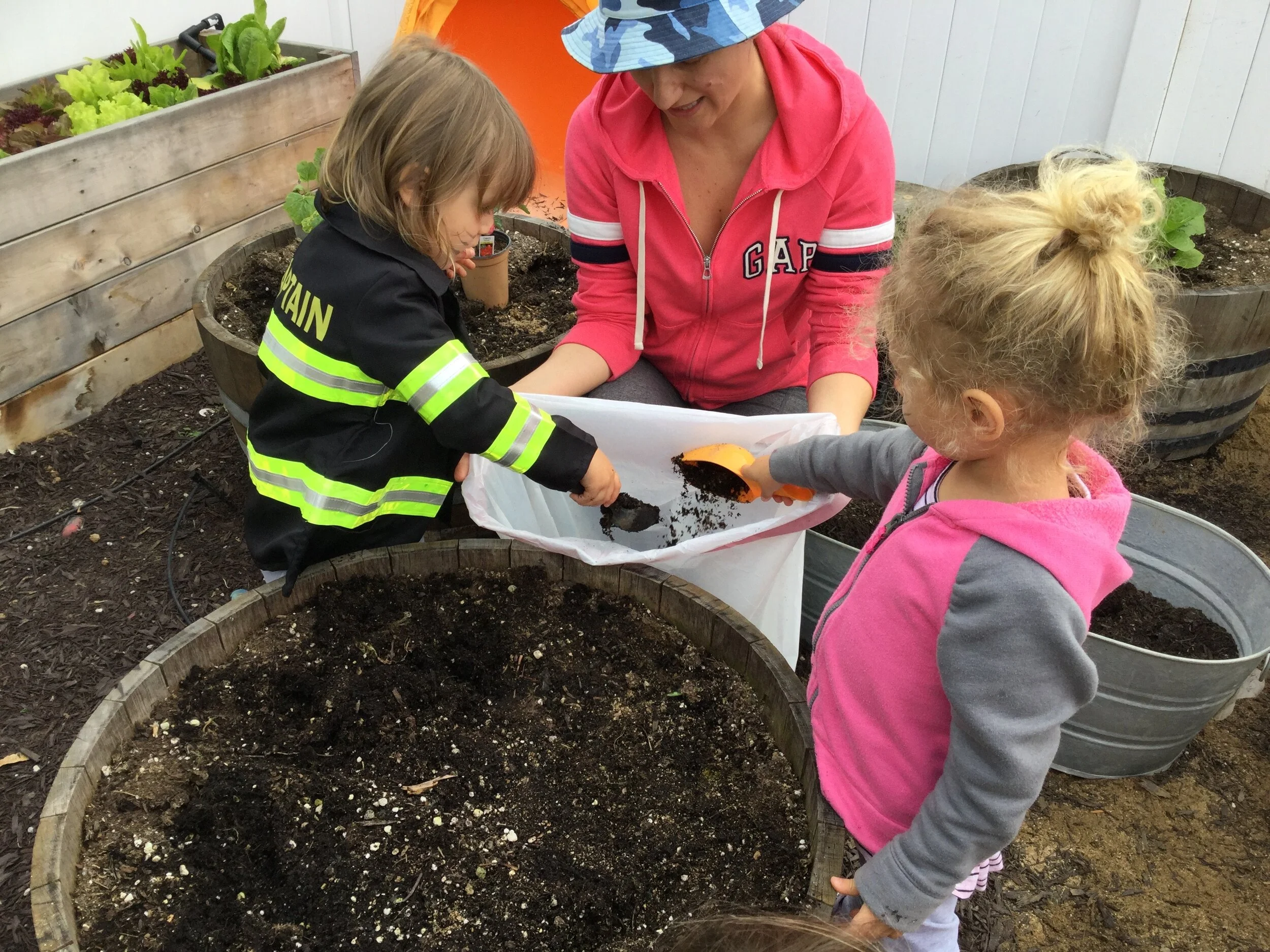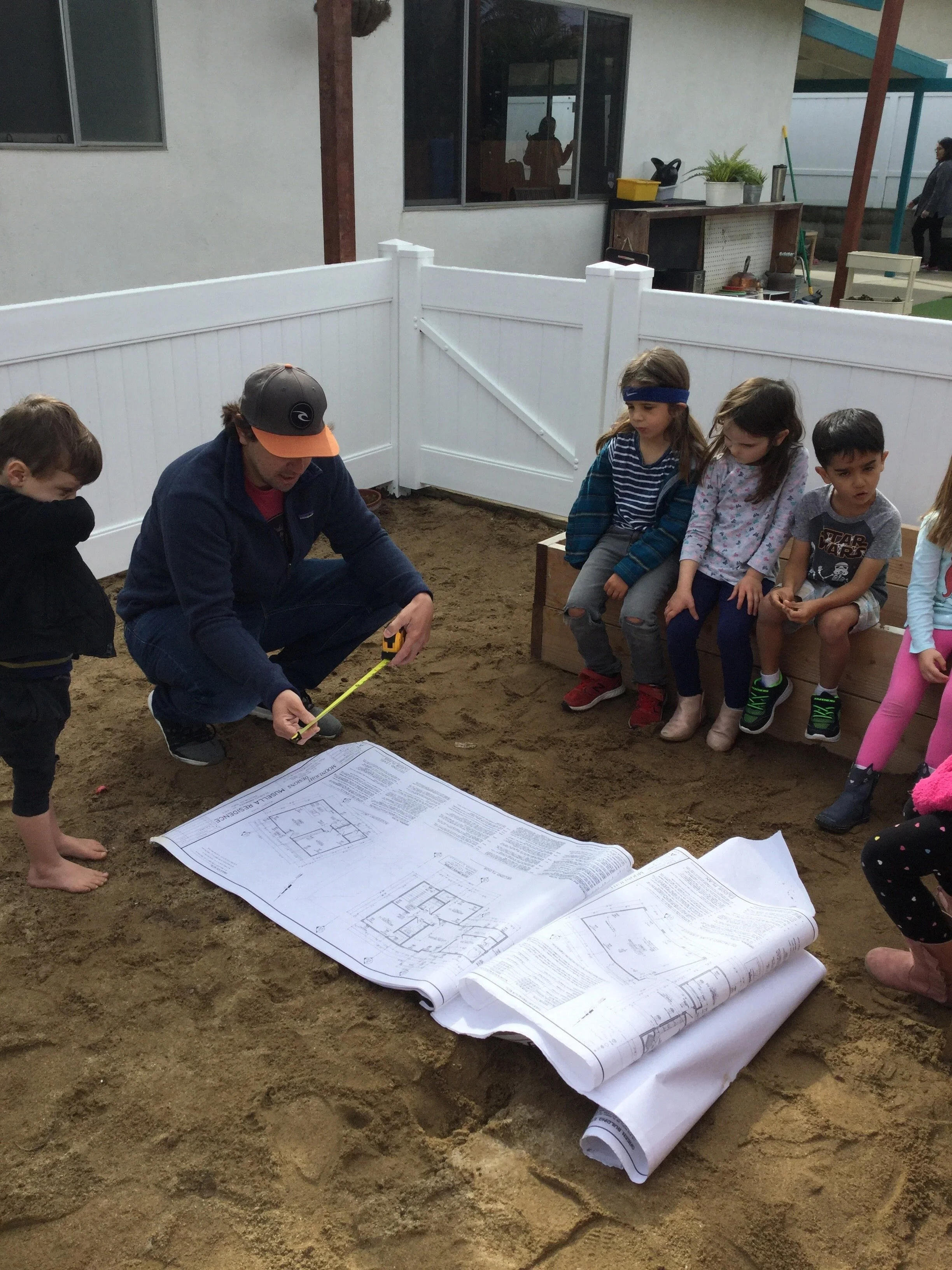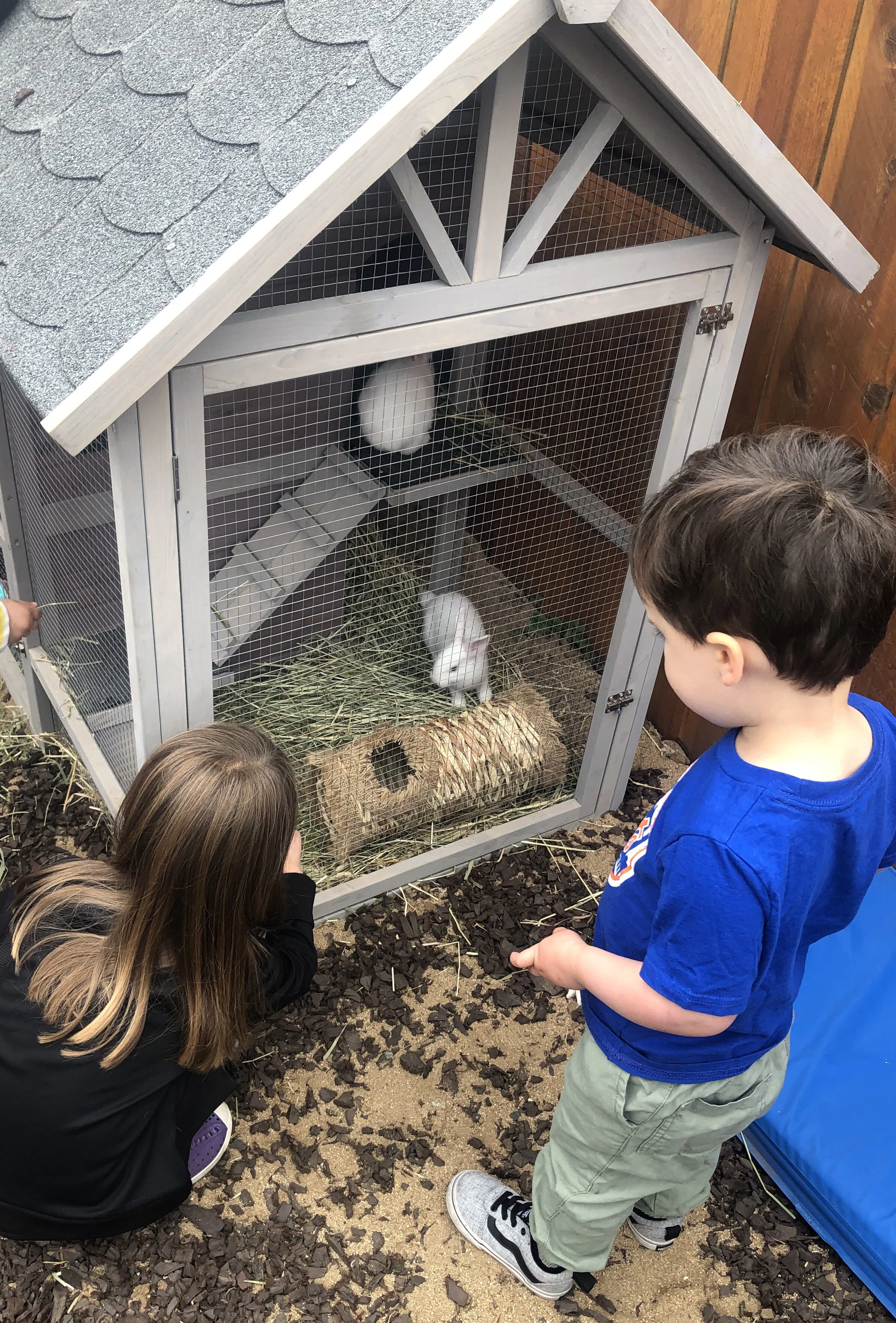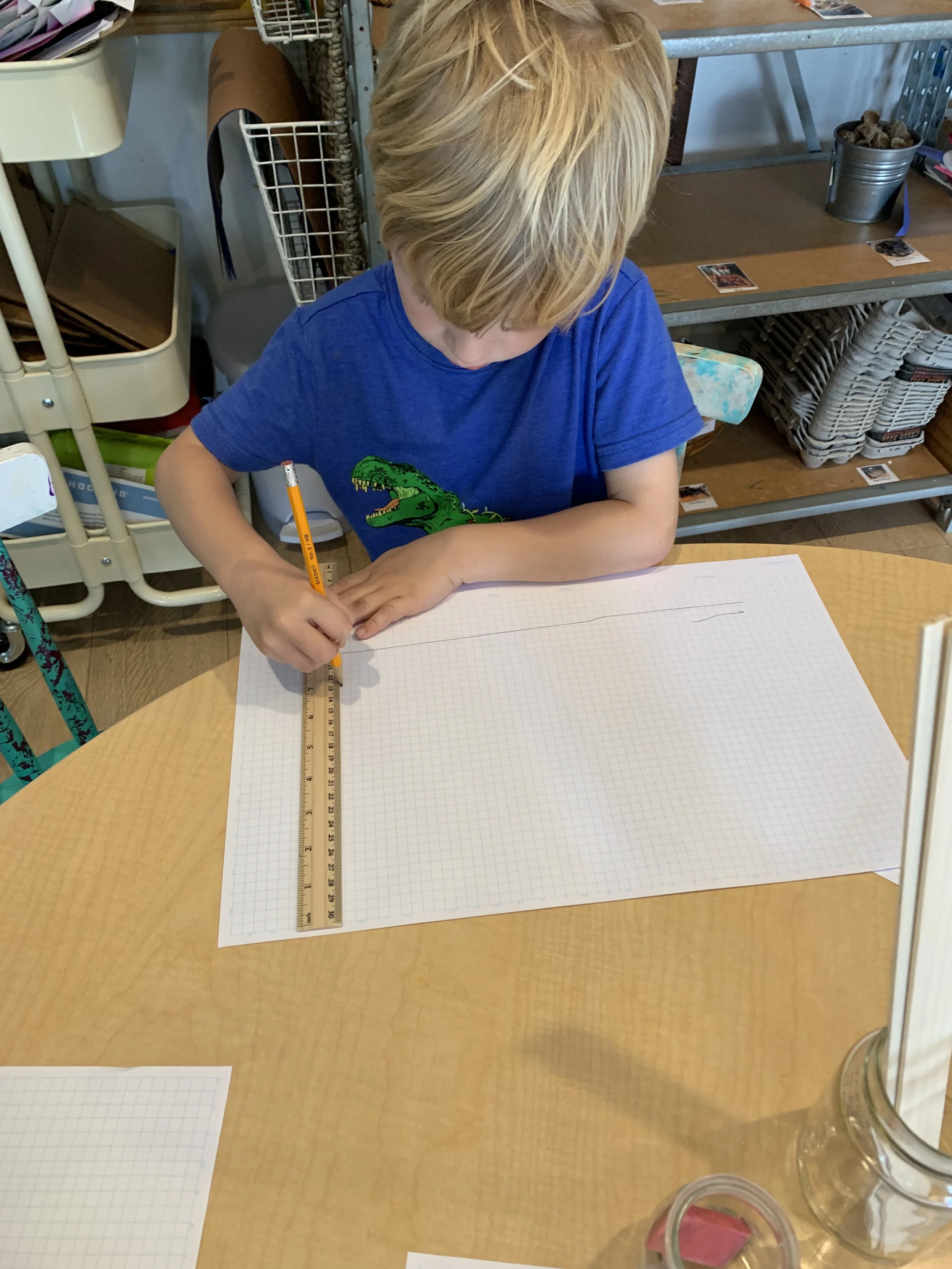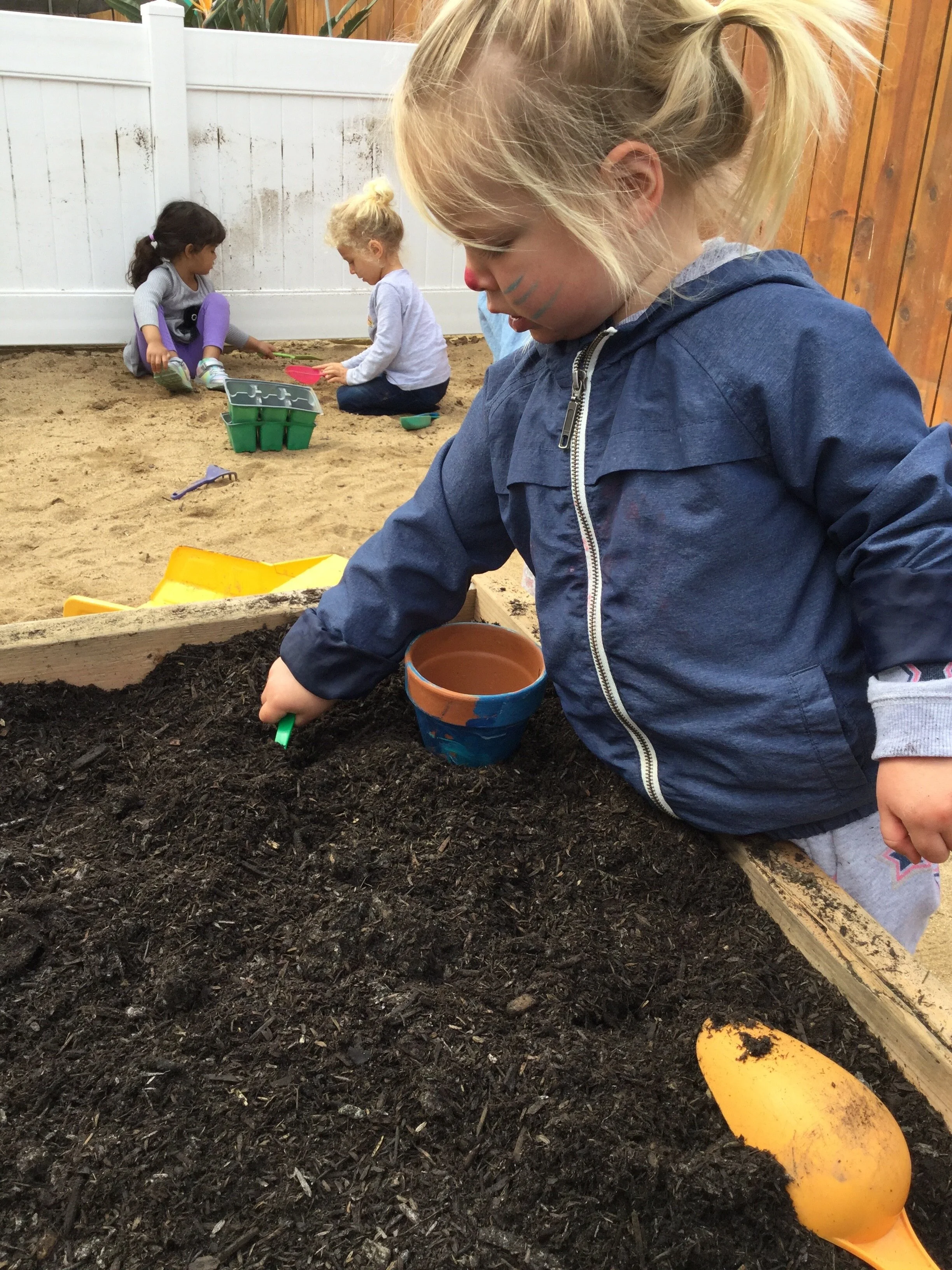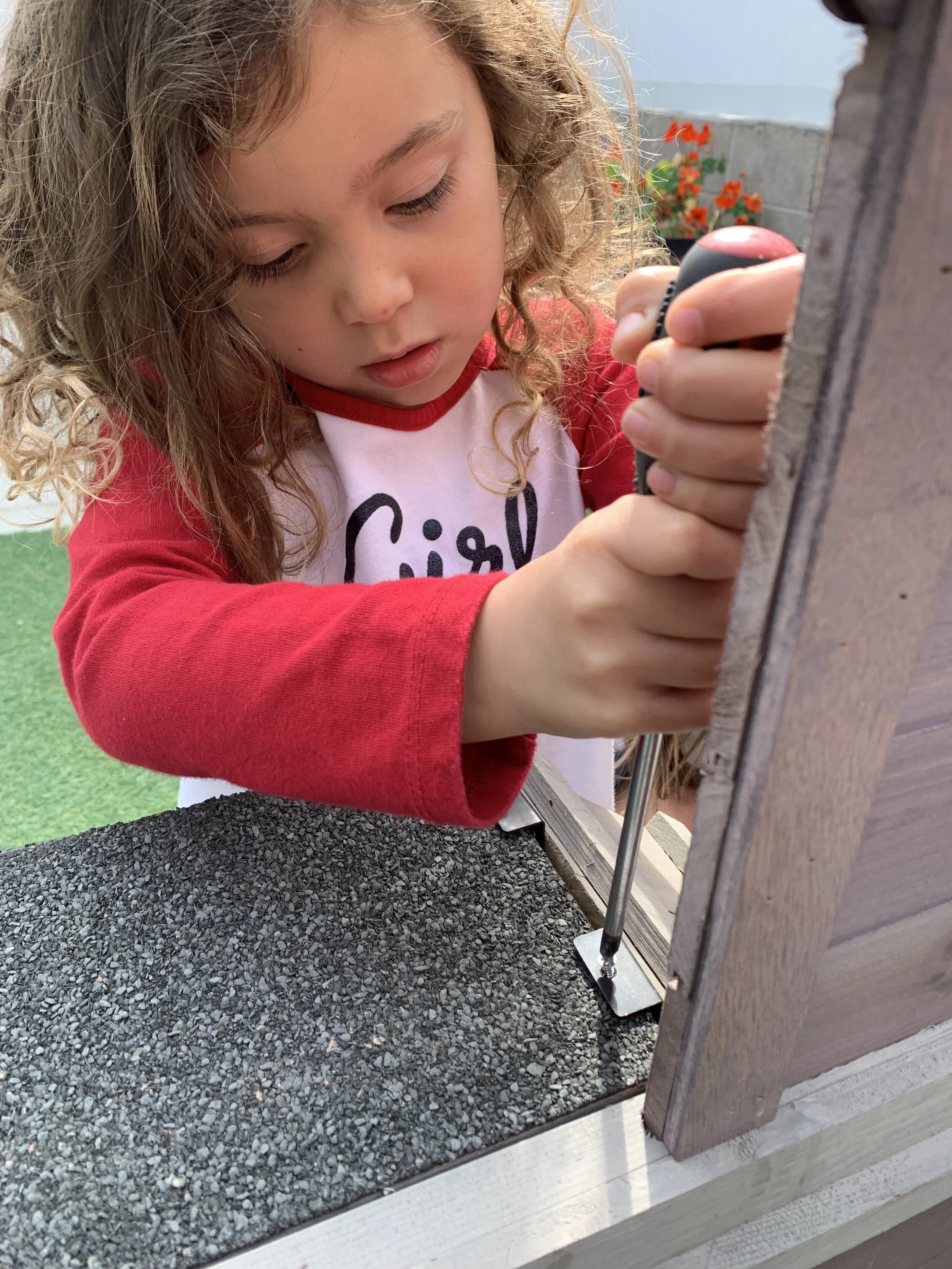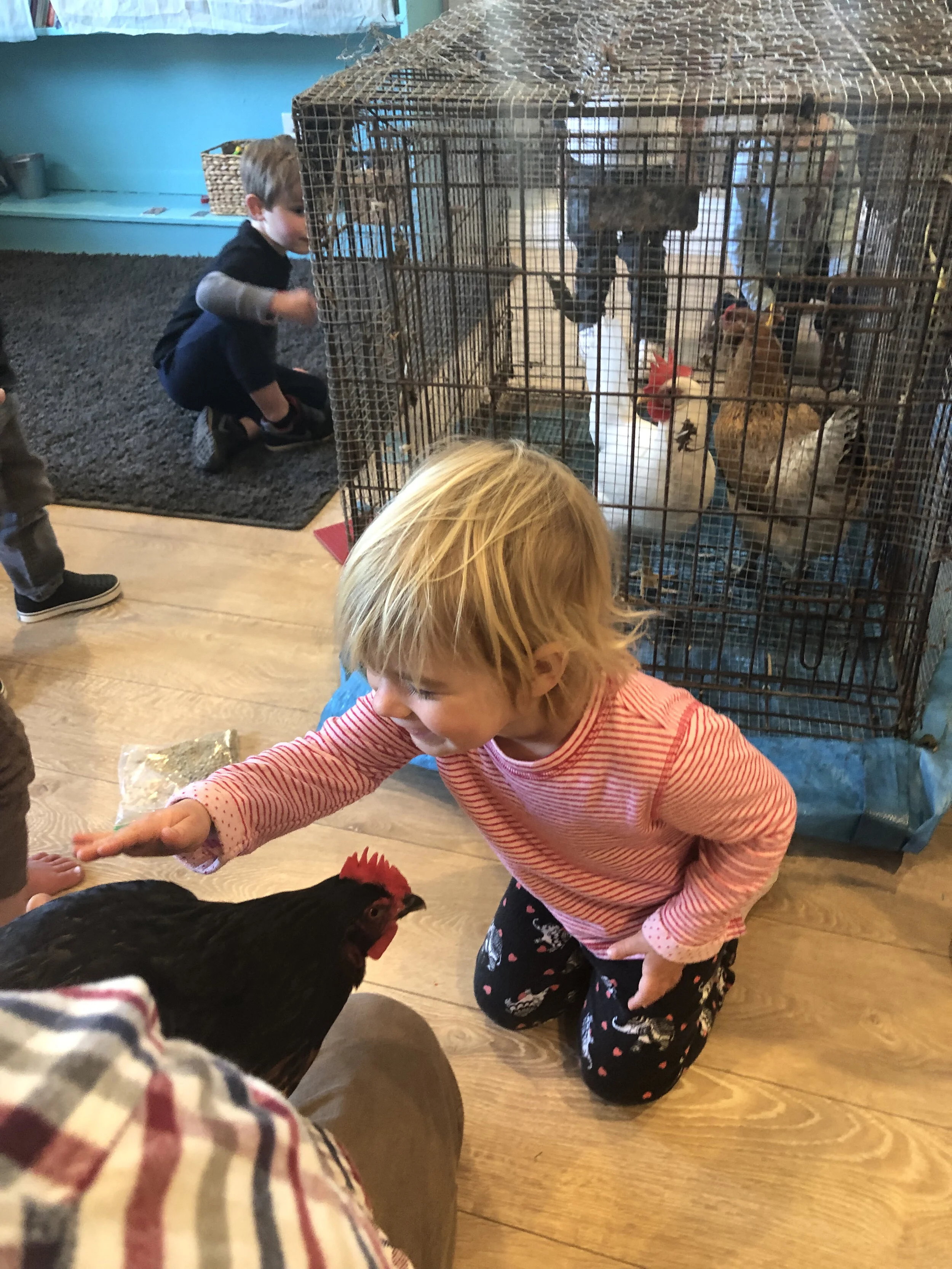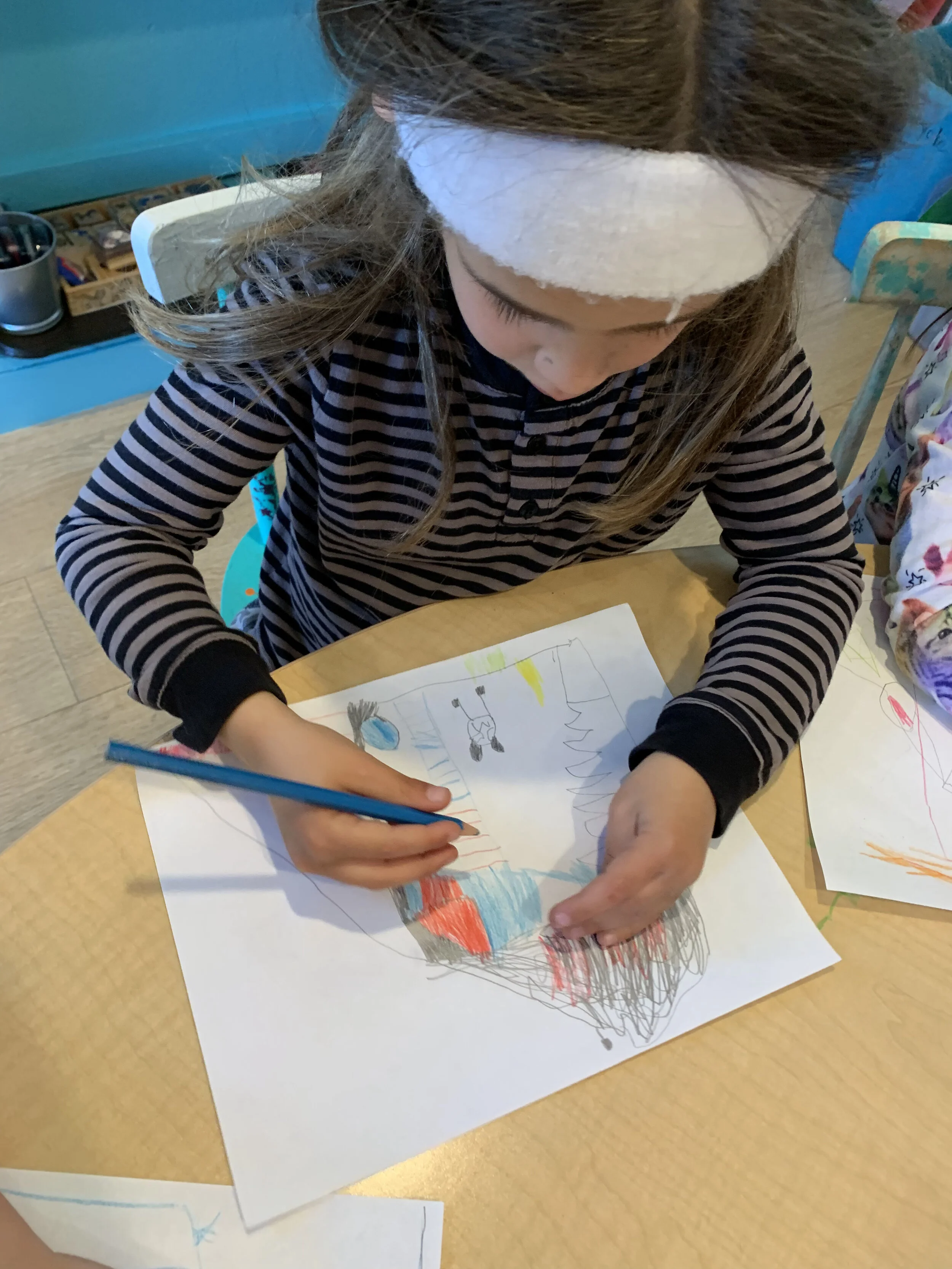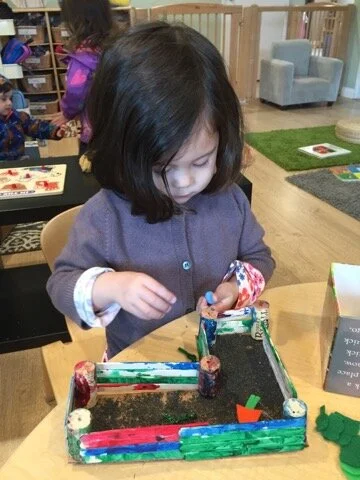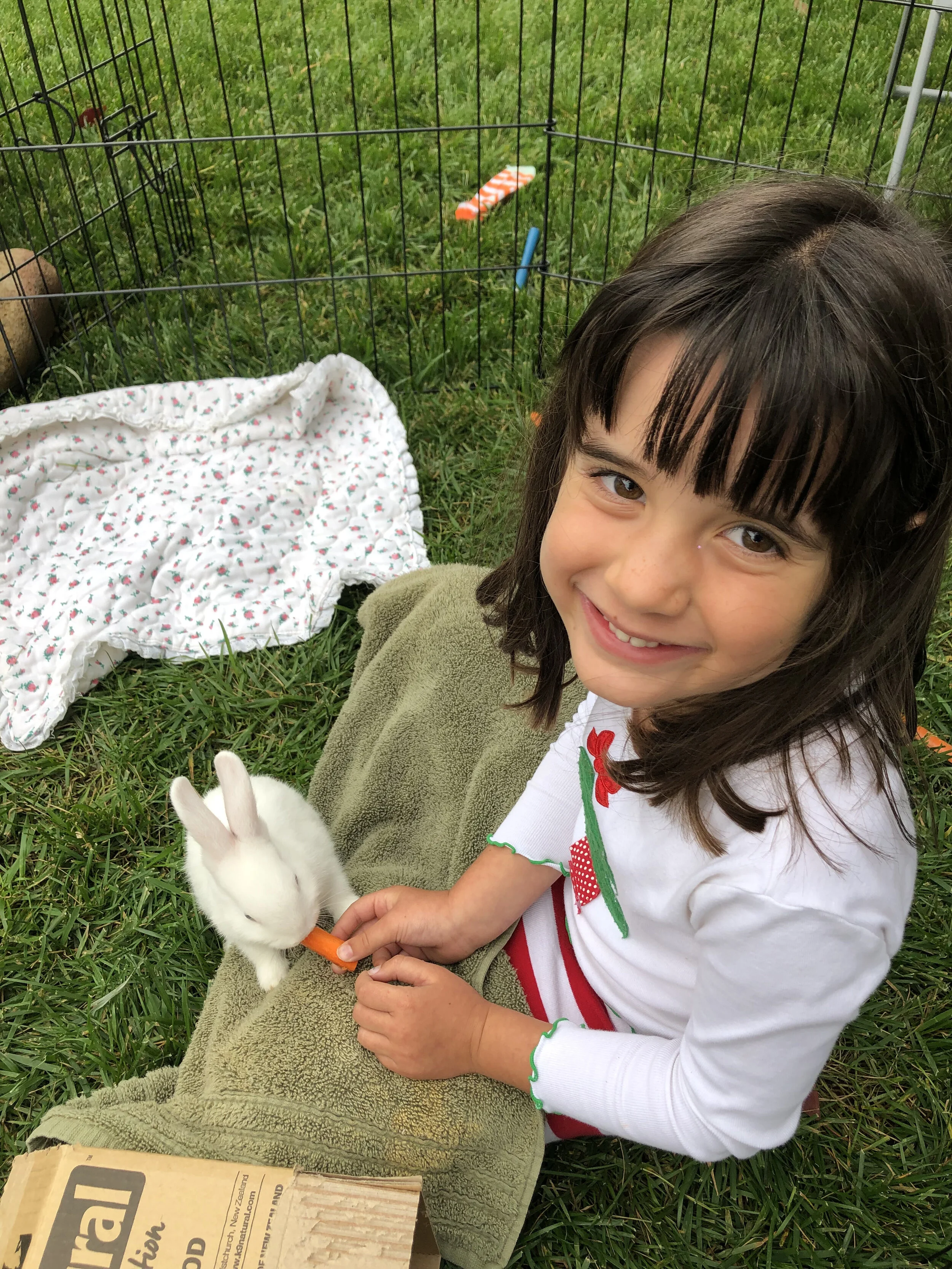The Bunny Project: A Look At Using Project Based Learning In A Mixed-Age Preschool
At Kids By The Sea (KBTS), our small preschool in Encinitas, CA, our curriculum rests firmly on two components: unstructured play and Project Based Learning. Children begin KBTS during their two-year-old year, and typically stay with us for three years, until they head off to kindergarten at five.
Above all, we believe our school should be a space bursting with love and joy and laughter and community and wonder and exploration and learning. We also take very seriously our commitment to supporting our children as they develop a strong inner compass: intellectually, socially, and emotionally, so that they go off into the world as responsible and caring citizens. We believe every child has an innate desire to learn, is worthy of our utmost respect as a human being, has unique and incredible talents and strengths to share with our community, and should be (with support) responsible for their own learning and development from a very young age. Finally, we believe strongly that our curriculum should support these beliefs about children and these goals for their learning and development. It is for these reasons that we are so passionate about unstructured play and project based learning.
If you walk into KBTS on any given day, you are likely to see children engaged in unstructured play. Yet, in each classroom, play looks different. While it is very natural for us to say play is important throughout early childhood, we would never expect two-year-olds to play the same way five-year-olds play. We know, when two-year-olds play, the activity itself is valuable, but we are also helping them lay the groundwork for the more complex play they will do in a few years. It is the same for project work. When we lay that foundation when children are two- when we begin to support their understanding of being responsible for their own learning, of asking questions and finding answers, of investigating a topic deeply in a hands-on manner- we are setting them up not only for the ability to undertake deep, meaningful project work at a later age, but also to incorporate this way of learning, this way of being, into their personas. Below are a few thoughts on how to make projects successful across the age levels.
Project Work Across The Age Levels
In our 3-4 year-old and Pre-K classrooms, project work is an expectation, while in our 2’s room it is an invitation. The children in the 3-4 year old and Pre-K classrooms sit down with their teacher all together and focus on project work. In our 2’s class, children are invited over (individually or in small groups) throughout playtime to work on the project with a teacher. Throughout the year, the complexity of the projects evolve as the children grow and develop through the year.
Student work must be meaningful and authentic. Therefore, we focus on making sure to develop projects where each class can add an important piece to the project as a whole, but in a way that makes sense for them. We value the contributions of each child, and strive to help them recognize how their individual piece creates meaning within the context of the whole project.
We see the teacher’s role as a co-learner and facilitator. This means we try to provide the exact right amount of support so that children have ownership of what they are doing. We work very hard to “get inside” the child’s head- to really understand what the children are understanding and gaining through each experience we provide them.
One very important role that a teacher plays during projects for 2-5 year olds is to be a storyteller. The teacher continuously tells the children the story of the project- to weave the pieces together for them. With our two year olds, we keep the story simple and repeat it often. The stories grow in complexity throughout the year and across the Pre-K classroom.
The Bunny Project
As we map out our projects, we utilize a method called “Backward Planning.” When using Backward Planning, we actually decide on our end goal first. which we call our final product. Once we have our final product in mind, we think about what skills, dispositions, and content knowledge the children need to learn in order to successfully create the final product. We divide all of this (what the children need to know) into a couple main topics, which we call Investigations. Investigations form the bulk of our project work. What follows is an example of a project we did to better illustrate exactly what projects look like at each age group.
Project Inspiration: The inspiration for our projects come from children’s interests and developmental goals. The year we did the bunny project, our children were obsessed with animals. They would play hours of “kitty family.” They loved to find and catch the lizards in our garden. They delighted in telling and hearing stories about pets. As teachers, we had been thinking about a class pet for awhile and decided this would be the year. At that very moment, one of our families told us about some bunnies who had just been born and were looking for a home. The bunny project came into existence.
Project Kick-Off: To begin a project, we always start with a kick-off. The purpose of our kick off is to build excitement and have a shared experience around our area of focus. For us, this often includes a field trip or expert guests (we often have to remind our guests- it doesn’t take much to be more of an expert on a topic than a 2,3,4, or 5 year old). For our Bunny Project, we immediately realized that we had many experts right in our classroom- many of our families already owned pets. Our Pre-K class wrote a letter to our families asking if they could bring in a pet to share with the class. We had an exciting and fabulous week as we learned how to care for, and interact with, lizards, dogs, cats, birds, and even ducks.
After the Kick Off, the children were even more excited about animals and there was a definite hum around the classroom. “Wait a minute,” one Pre-K boy exclaimed, “We should have our own class pet!” Everyone readily chimed in, “yes!!!!” And, of course, we agreed. We told them about the baby bunnies who needed a home and the Bunny Project began in earnest.
Project Overviews
2’s Class
We noticed how much our children enjoyed playing and working in the garden as well as cooking. We thought it would be fun to expand on these interests and see if they wanted to create a garden to grow food for our bunnies.
Big Question: Can we make a bunny garden to feed our bunnies?
Project Kick-off: meeting different animals (family pets that were brought in)
Investigation One: Can We Grow Our Own Plants?
Children explored plant growth through books, songs and garden exploration
Planted and decorated their own potted plants
Chose a favorite herb to plant
Cared for their plants (watering, placing in the sun, singing to them daily to give them love!)
Investigation Two: What Do We Need To Include In Our Garden?
Teachers helped children make the leap from growing and taking care of a plant to building an actual bunny garden.
Conversations about whether growing a bunny garden was a good idea (yes!!!) and linking what we had learned to what we would need to do in our bunny garen (“grow plants bunnies like to eat,” “add soil,” “show them love.”
Represented learning by creating “bunny gardens” using loose parts and paint.
Final Product: A garden filled with veggies the bunny could eat.
We learned what plants need to grow and how to take care of them. The children developed a deeper understanding of what our garden would look like. With the help of the older classrooms (who had each learned about what bunnies eat), we decided what veggies we would plant. Next, we invited parent volunteers to help us clear out an area of our garden and plant our bunny garden. Finally, in art, we created beautiful painted flowers on old records to hang as artwork in our garden. Our finished product was a lovely little bunny garden where we could grow veggies to feed our new bunnies.
3’s & 4’s Class
We decided it would be children’s job to learn about, and then teach the rest of us, how to take care of our bunnies. To answer this question, we asked the children what they thought they needed to learn to take care of our bunnies. They came up with three specific areas about which they felt it was important to learn. From this, we created three investigations, each with a focus question.
Project Kick-Off: The main emphasis was on experiencing the fun and joy of pets while practicing being careful observers and making on-topic comments.
Big Question: How do we take care of our bunnies?
Investigation One: What Do Bunnies Eat?
Children were visited by an expert guest, a dietician from the Safari Park, to learn about animal diets.
Children engaged in a hands-on tasting party to try a bunny diet.
Children created a venn diagram showing similarities and differences between bunny food and people food.
To represent learning, children cooked homemade bunny treats using food learned about.
Investigation Two: What Do Bunnies Need In Their Habitats?
Children engaged in research by interviewing pre-k class to learn what bunnies need in their homes.
Children created a checklist with these items.
To represent learning, each child made a small, 3-dimensional model of a bunny home that included items from the checklist.
Investigation Three: How Can We Keep Our Bunnies Healthy?
Children engaged in research including a visit from a veterinarian, reading books, and hands-on exploration with vet tools and bandages.
Reperested learning by creating a sign for the bunny home that would teach others how to carefully pet and hold and hold bunnies.
Final Product: Informational video on how to take care of bunnies that would be used to teach their classmates and parents
As a side interest, our 3-4 classroom was obsessed with phones, i-pads, videos, and asking Alexa for things. We knew for our final product we wanted to teach our classmates (and anyone else who was interested) how to take care of bunnies. We decided to utilize the children’s deep passion for Alexa and all things electronic to make a “Hey Alexa,” video. In the video, the children asked Alexa about each of their investigation topics and then went on to answer the questions. We videoed this and created a movie on Youtube that we could share with everyone to teach them how to take care of our new class pet.
Pre-K Class (4’s & 5’s)
Each year around this time, we try to do a project with our pre-k class that involves learning about and using the building process. We also like to introduce woodworking and using real tools. The fact that we needed a bunny home provided the perfect opportunity for our pre-k class to incorporate all the above aspects into their learning. They were charged with creating and building the bunnies’ home.
Project Kick-Off: This class was charged with asking questions and using the kick off to gain information on the responsibilities and preparation needed for pet ownership.
Big Question: How can we create a habitat for our bunnies?
Investigation 1: What Do Bunnies Need In Their Bunny Habitat?
Children engaged in research using books, videos and expert interview (a bunny owner)
They represented their learning through drafts of bunny habitats
Investigation 2: What Is A Plan And How Can We Use It In The Creation Of Our Bunny Habitat?
Children worked with a contractor to understand the importance and meaning of creating specific plans called blueprints
They measurements of the space so they could create their own blueprints
The group looked at all the first drafts they had created and decided which elements to include in the bunny house. They represented these elements using a key.
Each child created his or her own blueprint, including all the elements they decided upon.
Investigation 3: What Tools And Materials Will We Need To Build The Bunny Habitat And How Can We Learn To Use Them Safely?
Now that we had an actual blueprint plan, we were ready to build. But, first we had to learn how to use the tools we would need safely.
The class was visited by an expert woodworker who brought in tools to try and learn about.
After much hands-on exploration, each preschooler created a tool book to teach themselves and others what tools were needed to make the bunny habitat, and what each of these tools jobs would be.
Final Product: The bunny habitat where our bunny would live. The children researched what the bunnies need in their habitats, created a first draft of a bunny habitat, measured our space and made blueprints, and learned how to use the tools we would need safely. Finally, we were ready to build our bunny habitat. With the help of a few parents, we put all we had learned to use and built our bunny hutch. We were so thrilled when a couple of weeks later our baby bunnies moved in.
Celebrating the Learning
As with every project, we ended The Bunny Project with a celebration of the children’s learning. This almost always involves inviting families into our space to showcase everything the children have done. I love these celebrations for many reasons, two of which I want to share with you now. First, it is amazing to see the pride the children so obviously have as they share with their parents everything they have learned and created. And, second, it is rewarding to watch parents as they truly see the whole project (the final product and the steps along the way) and have that “ah-ha” moment as they realize everything their children have done. The comments we most often hear during these events are: “I can’t believe a two year old (or three or four or five year old) did this!” So, my take home message is this: when children are supported and given ownership of their work at a young age, when they have high expectations of their competence placed upon them, and when they are asked and expected to do real, authentic, meaningful work, what they can do is limitless. We are simply along for the ride.
Amanda Manger has a BS in Psychological and Brain Sciences from Dartmouth College and an MSEd from Bank Street College. She has worked as a teacher, instructor, and administrator in early childhood for over 20 years. She is currently the owner and director of Kids By The Sea, a preschool in Encinitas, California (https://www.facebook.com/KidsbytheSea123). She and her teachers present locally and nationally on various topics, including Project Based Learning.

